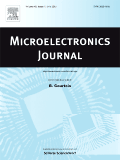
MICROELECTRONICS JOURNAL
Scope & Guideline
Innovating Insights in Nanotechnology and Materials Science
Introduction
Aims and Scopes
- Device Design and Fabrication:
Research on the design and fabrication of novel electronic devices, including FinFETs, TFETs, and HEMTs, aimed at enhancing performance metrics such as speed, power efficiency, and scalability. - Analog and Digital Circuit Design:
Development of advanced analog and digital circuits, including ADCs, DACs, amplifiers, and oscillators, with a focus on low-power, high-speed applications. - Integrated Circuit Technology:
Studies on the integration of various components and technologies within microelectronics, including system-on-chip (SoC) designs, memory architectures, and hybrid circuits. - Electromagnetic and RF Design:
Research on RF and microwave circuits, components, and systems for applications in telecommunications, IoT, and wireless communications. - Emerging Technologies:
Exploration of cutting-edge technologies such as quantum computing, neuromorphic computing, and energy harvesting systems, emphasizing their potential applications in microelectronics. - Reliability and Testing:
Investigations into the reliability of microelectronic devices under various environmental conditions, including radiation effects and thermal management. - Machine Learning Applications:
Utilization of machine learning and AI techniques for optimizing and designing microelectronic devices and circuits.
Trending and Emerging
- Energy-Efficient Designs:
A significant increase in research focused on low-power and energy-efficient design techniques for various applications, driven by the demand for sustainable technologies. - Machine Learning and AI Integration:
Growing interest in integrating machine learning and AI into circuit design and optimization processes, reflecting the broader trend of applying intelligent algorithms to enhance microelectronic performance. - 3D Integration and Packaging:
Research on 3D integration techniques and advanced packaging technologies is on the rise, driven by the need for higher performance and compact systems in microelectronics. - Flexible and Wearable Electronics:
A notable trend towards the development of flexible and wearable electronic devices, with an emphasis on new materials and fabrication techniques suitable for these applications. - Quantum Computing and Devices:
Emerging studies on quantum computing technologies and devices indicate a growing interest in exploring the potential of quantum mechanics in microelectronics. - Neuromorphic Computing:
An increasing number of publications are focusing on neuromorphic computing architectures, highlighting the shift towards biologically inspired computing systems. - Advanced Materials for Electronics:
Research into novel materials, including 2D materials and organic semiconductors, is gaining momentum as these materials offer new opportunities for device innovation.
Declining or Waning
- Traditional CMOS Scaling:
As the industry shifts towards alternative technologies like FinFETs and TFETs, traditional CMOS scaling research has diminished, with fewer studies focusing solely on scaling methods and challenges. - Basic Circuit Theory:
Fundamental topics in circuit theory are being overshadowed by more application-oriented research, leading to a decline in publications that primarily focus on theoretical circuit analysis. - Analog Circuit Design:
Although still relevant, there has been a noticeable decrease in the volume of papers dedicated to traditional analog circuit design, as the focus shifts towards mixed-signal and digital applications. - Passive Components Research:
Research on passive components such as inductors and capacitors is becoming less frequent, as there is a growing emphasis on active components and integrated solutions. - Low-Temperature Electronics:
Interest in low-temperature electronics research appears to be waning, likely due to the increasing focus on more commercially viable applications in standard operating conditions.
Similar Journals

Applied Science and Convergence Technology
Bridging Disciplines for a Technological TomorrowApplied Science and Convergence Technology (ISSN: 2288-6559) is a premier academic journal published by the Korean Vacuum Society, dedicated to advancing knowledge in the intersecting fields of condensed matter physics, electrical and electronic engineering, materials science, and theoretical chemistry. Based in South Korea, this journal serves as an essential platform for researchers, professionals, and students seeking to explore innovative applications and methodologies that drive convergence in science and technology. With a convergence period spanning from 2019 to 2024, the journal aims to publish high-quality original research and review articles that foster collaboration and knowledge sharing across disciplines. Its current quartiles position in top categories, alongside a respectable rank in Scopus, highlights its significance within the scientific community, although it is presently classified within lower tiers. The journal's commitment to open access ensures that vital research findings are accessible to a global audience, facilitating advancements in science and technology. As a notable outlet in its field, Applied Science and Convergence Technology continues to attract contributions that not only challenge current paradigms but also pave the way for future innovations.
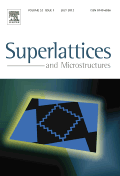
SUPERLATTICES AND MICROSTRUCTURES
Advancing the frontiers of materials science.SUPERLATTICES AND MICROSTRUCTURES is a premier journal dedicated to the exploration and dissemination of cutting-edge research in the fields of Condensed Matter Physics, Electrical and Electronic Engineering, and Materials Science. Published by Academic Press Ltd - Elsevier Science Ltd, this journal has established itself as an important platform for scholars and industry professionals to share their findings related to the design, fabrication, and application of superlattices and microstructured materials. With a commendable impact factor reflected in its rankings—positioned within the top quartile in Physics and Astronomy as well as Electrical and Electronic Engineering—it offers high visibility and influence in the academic community. The journal has covered significant contributions from 1985 to 2022, although access options have transitioned, making staying current essential for researchers and practitioners alike. This journal not only serves as a repository of knowledge but also fosters collaboration and innovation in materials science and related disciplines.
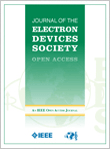
IEEE Journal of the Electron Devices Society
Fostering Breakthroughs in Electronic MaterialsIEEE Journal of the Electron Devices Society is a premier open-access publication dedicated to the advancement of knowledge in the field of electron devices. Published by the IEEE Institute of Electrical and Electronics Engineers Inc, this journal has been contributing essential research to the scientific community since 2013, reflecting its commitment to fostering innovation and development in the industry. With a notable impact factor that places it in reputable category quartiles—Q3 in Biotechnology and Q2 in both Electrical and Electronic Engineering and Electronic, Optical, and Magnetic Materials—this journal stands as a respected outlet for cutting-edge studies. Positioned among the top-ranked journals in its respective categories, including a Scopus rank of #90 in Electronic, Optical and Magnetic Materials, it serves as a vital resource for researchers, professionals, and students alike. The open-access model enhances the journal's accessibility, allowing for widespread dissemination of crucial findings and innovations in electron device technologies. Whether you are engaged in academia or industry, the IEEE Journal of the Electron Devices Society is essential for remaining at the forefront of advancements in this dynamic field.
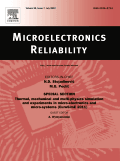
MICROELECTRONICS RELIABILITY
Advancing the Future of Microelectronics ReliabilityMICROELECTRONICS RELIABILITY, published by PERGAMON-ELSEVIER SCIENCE LTD, is a pivotal journal that serves the advancing field of microelectronics and materials reliability. With its ISSN 0026-2714 and E-ISSN 1872-941X, this journal has been at the forefront of disseminating research since its inception in 1962 and is set to continue exploring cutting-edge topics through 2024. The journal holds a respectable presence across several categories, achieving a Q3 ranking in areas such as Atomic and Molecular Physics and Electrical and Electronic Engineering, highlighting its broad interdisciplinary appeal, while also ranking in the Q2 category for Safety, Risk, Reliability, and Quality, which speaks to its commitment to ensuring standards in technological advancements. Access to this journal is subscription-based, making it an essential resource for researchers, professionals, and students seeking reliable information and data regarding electronic material performance and reliability assessment. Located in Kidlington, Oxford, UK, MICROELECTRONICS RELIABILITY is dedicated to advancing the field and addressing the critical issues associated with the reliability of microelectronic devices, thereby supporting innovations that shape our technological future.
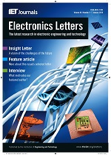
ELECTRONICS LETTERS
Connecting Ideas, Shaping Technology.ELECTRONICS LETTERS, published by WILEY, is a leading peer-reviewed journal dedicated to the field of Electrical and Electronic Engineering. With a rich history dating back to 1965, this journal serves as a prominent platform for disseminating novel research and innovations in electronics, covering topics such as circuit design, telecommunications, and signal processing. In 2021, the journal transitioned to an Open Access format, ensuring that cutting-edge research is freely accessible to a global audience, thereby enhancing its impact and outreach. The journal currently holds a Q3 quartile ranking in its category, reflecting its solid position among its peers, and ranks #451 out of 797 in Scopus for Electrical and Electronic Engineering, placing it within the 43rd percentile. ELECTRONICS LETTERS is essential for researchers, professionals, and students looking to stay abreast of the latest developments and contribute to advancements in the field, fostering collaboration and knowledge sharing in a rapidly evolving landscape.

SOLID-STATE ELECTRONICS
Exploring the Depths of Solid-State InnovationsSOLID-STATE ELECTRONICS, published by Pergamon-Elsevier Science Ltd, is a highly regarded journal committed to advancing the field of solid-state physics and its applications. With an ISSN of 0038-1101 and an E-ISSN of 1879-2405, this journal has been a cornerstone of scholarly communication since its inception in 1960. Covering a rich spectrum of topics, it features in the Q3 category for Condensed Matter Physics, Electrical and Electronic Engineering, and Materials Science, reflecting its robust engagement in these critical fields. Despite not being an open-access journal, it provides valuable insights and research findings accessible to both academia and industry professionals, ensuring the dissemination of cutting-edge knowledge. With a strong focus on empirical research and theoretical developments, SOLID-STATE ELECTRONICS aims to bridge the gap between fundamental science and practical application, making it an essential resource for researchers, professionals, and students alike in the United Kingdom and beyond.

SEMICONDUCTOR SCIENCE AND TECHNOLOGY
Pioneering discoveries in condensed matter physics and technology.Semiconductor Science and Technology is a pivotal journal in the fields of condensed matter physics, electrical and electronic engineering, and materials science, published by IOP Publishing Ltd. With an ISSN of 0268-1242 and an E-ISSN of 1361-6641, this esteemed journal has been disseminating groundbreaking research since 1986 and is set to continue through 2024. Recognized in the latest categorizations, it holds a notable Q2 ranking in Condensed Matter Physics, Electrical and Electronic Engineering, and Materials Chemistry, alongside a Q3 ranking in Electronic, Optical, and Magnetic Materials, highlighting its significant contribution to the advancement of these disciplines. Although it does not operate under an open access model, the journal provides critical access options for researchers and professionals seeking to foster innovation and collaboration within the semiconductor community. As a vital resource, Semiconductor Science and Technology not only supports the dissemination of high-quality research but also serves as a platform for emerging trends and developments that are shaping the future of semiconductor technology.

Nature Electronics
Connecting Ideas, Advancing TechnologiesNature Electronics is a premier journal in the field of Electrical and Electronic Engineering, published by NATURE PORTFOLIO. Established in 2018 and converging until 2024, it has swiftly positioned itself as a leading platform for groundbreaking research, holding a prestigious Q1 ranking in multiple categories including Electronic, Optical and Magnetic Materials, and Instrumentation according to the latest 2023 evaluations. The journal boasts an impressive Scopus ranking, securing the top position in Instrumentation and showcasing exceptional standings in both Electrical Engineering and Materials Science. With a commitment to disseminating high-quality research, Nature Electronics offers insightful access to the latest innovations and advancements in the electronics domain, making it an essential resource for researchers, professionals, and students alike. Engaging with this journal enables readers to stay at the forefront of technological progress and fosters discussion on the future of electronic materials and devices.

IEEE Open Journal of Circuits and Systems
Catalyzing innovation in circuits and systems research.Welcome to the IEEE Open Journal of Circuits and Systems, a premier platform dedicated to disseminating high-quality research in the field of electrical engineering and circuit design. Published by the prestigious IEEE-INST ELECTRICAL ELECTRONICS ENGINEERS INC, this journal embraces an Open Access model since its inception in 2020, facilitating unrestricted access to cutting-edge advancements for researchers, professionals, and students alike. With the rapid evolution of circuits and systems technology, this journal aims to serve as a vital resource for promoting innovative ideas, sharing interdisciplinary research, and fostering collaboration among the global engineering community. The E-ISSN 2644-1225 signifies our commitment to digital publication and the accessibility of research findings. As the field continues to expand, we encourage submissions that explore the latest trends, methodologies, and applications, ensuring that our readers remain at the forefront of knowledge in this dynamic domain.

MICROELECTRONIC ENGINEERING
Exploring the Intersection of Physics and Engineering in MicroelectronicsMICROELECTRONIC ENGINEERING is an esteemed journal published by Elsevier, focusing on the rapidly evolving fields of microelectronics and nanotechnology. It encompasses a wide array of topics, including atomic and molecular physics, condensed matter physics, and the engineering aspects of electronic, optical, and magnetic materials. With its impressive impact factor and recognition as a Q2 journal in several categories, it provides an invaluable platform for researchers and professionals to disseminate their groundbreaking findings. The journal has been instrumental in advancing our understanding and application of microelectronic technologies since its inception in 1983. Currently ranked highly within various specialized categories in Scopus, MICROELECTRONIC ENGINEERING offers targeted access to cutting-edge research, fostering innovation and collaboration in the world of electronic engineering and materials science. As we look towards the future, with convergence continuing to shape research until 2024, the journal remains a critical resource for those dedicated to pushing the boundaries of knowledge in these dynamic fields.